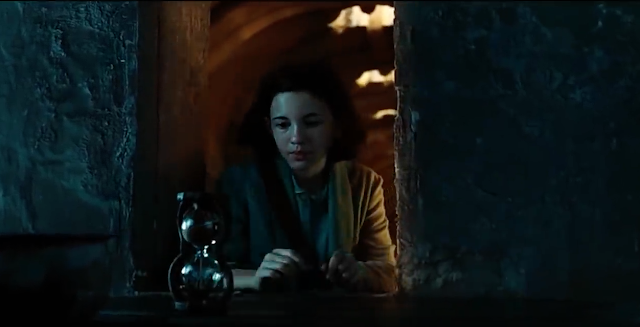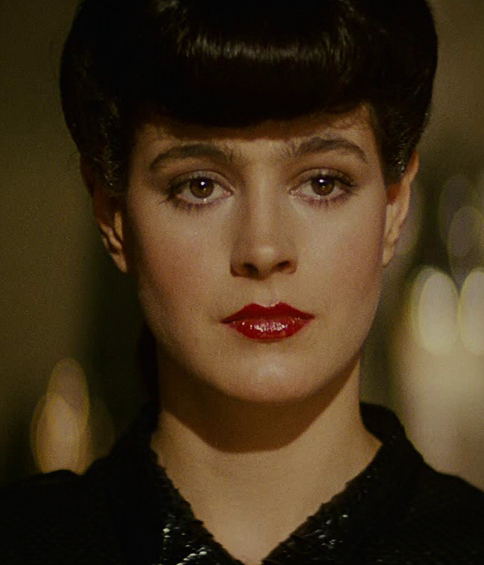"Naturity" evaluation
Featuring only one character, “Naturity” is the tale of Man, a businessman lost in the wilderness, who finds a new meaning to life due to being exposed to nature. It follows a simple narrative: Man’s quest to return to civilisation, however, features a shocking twist. When Man finally returns to society, he has embraced the natural world so that he no longer feels welcome in the urban environment. The audience is meant to sympathise with Man throughout, because at the start he is ordinary and easy to relate to in the fact that he is a modern urbanite, therefore an active audience would hopefully align with him. The message of the film is meant to speak directly to the audience because the character that they align with learns a lesson that consequently challenges beliefs about the modern world. During the night scene, the audience should be noticing the clear parallels between Man and his Neanderthal ancestors, who whilst considered primitive were infinitely more natural in the way that they behave. The end twist is that Man transforms into Ape, the de-evolution scene is a metaphor for the fact that humans, despite the unnatural world we live in, are animals and that nature seems to be forgotten to us. This is echoed in the opening scene, by informing the audience of the meaning of Naturity, and the fact that it is now an obsolete word, I think that the scene will turn the audience into an active one by giving out new information and then they will link the word ‘obsolete’, not only to the usage of the word but to its meaning in today’s culture. The final shots of the film highlight the fact that Ape, or the animal inside Man, is now free and the call he makes as Ape shows the relief and freedom he gets from embracing nature. By challenging the Eco-fascism of the capitalist state, I hope to change the audience’s way of thinking to believing that the status-quo isn’t the only way and is in itself unnatural. The fact that the majority of the film will be in the style of independent social realism, the spectator will be shocked by the hyperrealism of the ending, therefore causing the metaphor to be more heavily focussed on.
Drawing influence from a wide spectrum of cinema, I looked at “Elephant” (Clarke, UK, 1989), “La Jetée” (Marker, France, 1962), “When the Day Breaks” (Tilby and Forbis, Canada, 1999) and “High Maintenance” (Van, German, 2006). These four seemingly extremely different films, however, share a link in the fact that they illustrate problems within society, they differ in the telling of these lessons. “High Maintenance” and “La Jetée” explore the problems through dystopian futures; all bar “Elephant” follow a focal character and the spectator aligns with them.
In all dystopian films there is a familiar but enhanced quality from today’s life, that in this new state seems sinister or wrong. In “High Maintenance”, pickiness in choosing a partner is pushed to the extreme of customised partner robots. By showing the absurdity of the concept, the spectator is challenged to rethink the way they lead their lives. Whilst “Naturity” is not set in an unwelcome future, it has the same principal, by showing that humanity has gone too far in industrialisation, it is almost a ‘dystopian present’. The alignment in Van’s short film is to the female character, therefore the twist is more shocking when the nature of the relatable character changes. This inspired the change of Man to Ape, as the alignment causes a greater shock. In “Naturity”, Man is shown in very similar scenarios before and after the night, both times there is a gust of wind and a bird chirping, however his outlook is changed: before he is nervous and apprehensive and afterwards he embraces nature and finds his surroundings beautiful. This is also inspired by two scenes in “High Maintenance”, during which the male character says practically the same dialogue in the same meal except he is a different version of himself. I hope an active audience would compare the two scenes in my film and follow Man’s psychological progression towards acceptance of the beauty in nature.
My film shows how unnatural society is by showing how out of place animals seem in urban surroundings, this was inspired by the premise and underlying themes in “When the Day Breaks”. Only containing animals, the film creates an unnatural feeling by showing animals acting as humans, completing everyday tasks and standing on their hind legs. From seeing a couple of rodents smoking, I was inspired to use the metaphor of Ape, to stress my message, that society has abandoned its origins, hence why a word like “Naturity” is now obsolete. Originally I found it difficult as a spectator to align with the main character, a sheep, as it did seem quite unfamiliar, however in “Naturity” the audience will follow Man and watch him metamorphise into Ape, this will enable the audience to more easily align with Ape as they will be able to understand what the character represents: he is the natural animal inside all humans. Hopefully, after aligning with the familiar Man, who represents unnatural humanity, the active audience will recognise the flaws in Man, therefore the flaws in the collective mankind. They will also realise that the forest, a natural environment, should not be feared or forgotten but embraced and supported. This would obviously be my preferred reading of the film; an active audience will see the message and choose to neglect or embrace it; however, a passive audience is at danger of failing to see the message behind the plot.
A memorable feature of my short film is the soundtrack; a recurring cycle of non-diegetic sounds created diegetically, building up into a symphony of incidental noises. Accompanied by no backing track, there is also no music until the closing shots. This takes inspiration from the silence in “Elephant”, I found this extremely effective, in causing the audience to focus purely on the action, making the mise-en-scene more dominant and forcing the audience to be active as there is no music to lull you through the scene. The visuals and mise-en-scene in “Naturity” are key to understanding the message, so by having a lack of music, the active spectator is forced to pay more attention to the beautiful scenery, allowing them to comprehend the wonder of the natural world. The soundtrack of noises is inspired by the career of the composer Ennio Morricone, whose music is so unique, it would be easy to argue that he has an auteur style. Taking influence from the western scores that he composed, for example “Once upon a Time in the West” (Leone, US, 1968), they often feature music created from random noises, like shouts or dripping water. These noises add a rough texture to the film and build up suspense as the cacophony climaxes, often before a gun fight. Tobe Hooper also achieved a similar effect in “The Texas Chainsaw Massacre” (Hooper, US, 1974), as he builds up unnerving sounds and music causing a sense of dread and panic until the girl screams. Both of these examples proved to me how imperative a soundtrack can be to change the mood of the piece, so in “Naturity” I build up the pace of the sounds until the tension is high and Man, no longer able to keep things together, screams on the steps. The tension that is created by this aids the narrative greatly because it emphasises the message of anti-urbanisation, when in civilisation again the lack of nature pains him so much that he screams. The underlying soundbite in my soundtrack is the telephone ringing out, this not only is the first sound the character causes but was inspired by the opium den scene in Leone’s “Once upon a Time in America” (Leone, US, 1984)where there is an originally diegetic ringing that explores the audience’s idea of the diegetic and the non-diegetic, to show that part of the scene is a flash back and to add mystery and suspense. In “Naturity” the ringtone emphasises the unnatural presence in the natural setting and is the base for the build-up of suspense. In “Naturity”, the song “Apeman” by the Kinks closes the film allowing a light-hearted end, almost celebrating his release from the restraints of the urban world. This was inspired by the use of pop music scores by directors like Scorsese and Tarantino, who found songs to reflect the tone of the film. As well as this, the song’s lyrics match my message of naturity, in my film:
“In man's evolution he's created the city and the motor traffic rumble
But give me half a chance and I'd be taking off my clothes
And living in the jungle”
The final scene of my film changes tone, becoming hyper-realistic, due to Man becoming Ape, in a sequence taking great influence from “Morgan: a Suitable Case for Treatment” (Reisz, UK, 1966), which uses an ape as both a physical suit and as a metaphor of the animalistic qualities of man and how urban life would drive an animal insane. I paid homage to the film in an intertextual reference: the company’s name is “Warner and Redgrave LTD”, the names of the two leads. The idea of the ape in an urban setting is very influential to "Naturity", as well as featuring similar messages to the earlier film: mine being environmentally friendly and against capitalist eco-fascism and the other being communist and against capitalism. Whilst my message would be the preferred reading, I can understand that conventional views are hard to reject so easily, therefore I imagine many people will take the negotiated reading: whilst nature is beautiful, the urban world isn’t bad.
The final three shots are inspired by the techniques used in “La Jetée” as they are three stills of Ape. I think this technique is effective because it allowed both myself and Marker to elongate the length of a single still, so that the mise-en-scene can be explored in detail. It also allowed me to crystallise the last seconds of the film: showing that his freedom is eternal, much like the famous last shot of “Butch Cassidy and the Sundance Kid”, where the freeze frame keeps the ending pure and upbeat, also allowing what could have been a millisecond’s worth of film to last for seconds.
I think that my film is successful in meeting my aims as a filmmaker, it clearly puts across the message of the piece, by forcing the spectator to follow man’s journey towards the triumph of de-evolution, whilst also meshing with the genres of social realism and hyper realism. It is a warning against the eco-fascism of the capitalist state, becoming a ‘dystopian present’ film as society has already become the future that the earth dreads.



Comments
Post a Comment